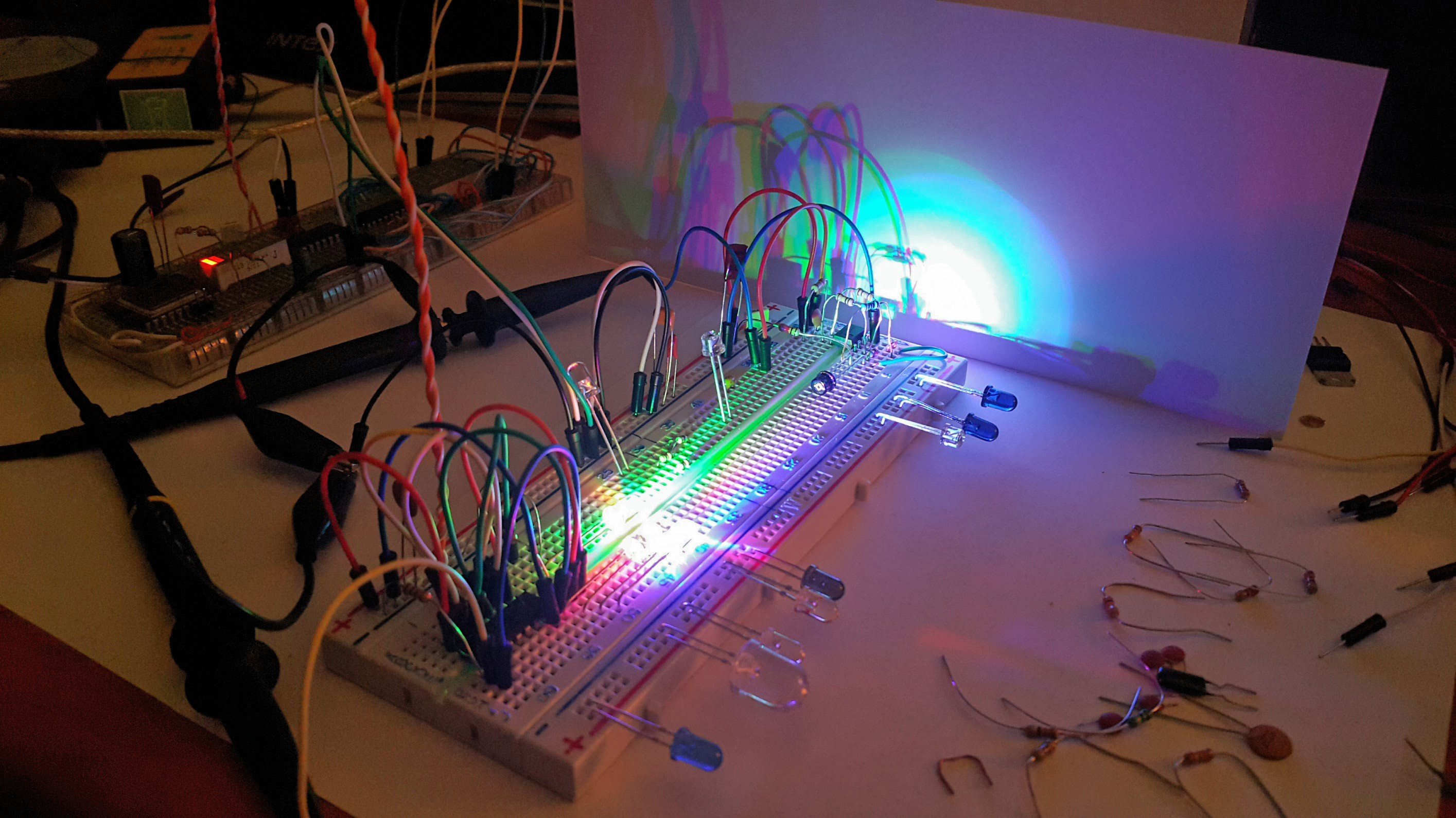-
Single LED source - multiple channel separation
12/31/2016 at 18:37 • 2 commentsFor the end of this year I would like to share with you a simple solution for multi channel separation of single LED source.
![]()
(it operates on 14MHz pulse per channel with 30% Duty and phase shift of 120deg per channel)
Happy New Year.
-
It can be used even when daylight fills the room
09/08/2016 at 22:17 • 0 commentsUntil new research results and developed solution came in a few weeks I'd like to share some images of how it work even in daylight with one red LED emission diode at 1.1m distance from receiver.
First it should be noted that the level of ambient light in the darker parts of the room was about 10EV (~2600 Lux) and that red LED is at ~18000 mcd at peek. Pictures was taken while testing 5..10MHz square pulse with 10..50% duty cycle and it (RC) degradation on receiver side with distance.
Green LED on the receiver lights up when signal is detected with the level greater than 3V. As the latest version of the receiver with 3 Op.Amps also serves as a band-pass filter, ambient light as constant at the level of ~ 11EV is suppressed. In the second picture is shown that hiding of red LED signals as emission source do not excites the receiver's green LED although ambient light level is high enough to do that.
![]()
![]()
-
Word or two about polarizatio of light
07/09/2016 at 21:11 • 0 commentsAs we all already know light (as any other EM) can be easly polarized. By seting different polarization angles of emited ray it is posible to have much more then one light beam of same frequency (color) in the same propagation path.
In next video you can se how it is posible to do more then just masking of light source with 3 polarized filters. I also demonstrate some posible logical operations with light so watch carefuly ;)
-
Color ch. filtering
07/07/2016 at 17:08 • 0 commentsWe all know that Light Emitting Diode (LED), convert electrical energy into light on the basis of recombination of electrons and holes that release energy quants in the form of photons which have frequency dependent on the material from which the semiconductor layer is made. As a semiconductors it can be turned on and off at high speeds, which can be used for directly sequenced coding, part of an orthogonal coding is also possible because on LED’s we can control to some extent the level of photon emission, that is light intensity.
In addition, LEDs are available in several different color shades, which allows the application of color separation filters corresponding to the reception so Space Time Coding (STC) be carried applied, i.e. each color can become a separate channel.
Light due to its dualistic nature in addition to its quantum also inherent all EM waves characteristics, and can be polarized. The standard IEEE 802.15.7-2011 foresaw the possibility of the existence of 3 different Physical Layer (PHY) operational mode in which will provide bit rate up to 96Mbit/s for optical clock rate of 24MHz and 16-Color Shift Keying (16-CSK) modulation (PHY III Optical Mode)
Knowing all of that we can try and make color and polarization filtering of separated color chanels.
![]()
Blue filter pass blue and portion of green LED light.
![]()
Red is doing oposite.
![]() Setup with color stickers :)
Setup with color stickers :) -
Ultra bright <75mA LED
07/07/2016 at 16:50 • 0 commentsResonant Cavity Light-Emitting (RCLED) diode, (whose price exceeds several thousand dollars) or diffusely scattered laser LED diodes would be ideal solution if we can ignore price, cost of assemby and health hazards.
With the aim to focused on the development of sustainable solutions using the widely available technology (preferably more accessible prices) that can be of applied in IoT and sensor systems and whose total power consumption does not exceed 2W (maximum 5W). Taking into account the above guidelines after the initial consideration and experiments we decide not to use ≥1W Hi-Power LED, since their nominal supply current while running is ≈350mA, and pulse at the beginning of the emission cycle goes through 500-550mA. As a substitute in the solution was applied Ultra-Bright / Superbright (UB) 5mm LEDs designed to work in outdoor daylight condition in signaling devices and large LED panels. UB-LEDs are on the market in average 3 to 5 times cheaper than 1W Hi-Power LED, provide a focused beam of the semi-angle φ1/2 of 8-30° with the intensity of light emission from 8000 to 37000mcd (mili candela) at Forward current If = 20-35mA (with 75-90mW we can find even > 57cd UB-LEDs ).
![]()
-
LED light
07/07/2016 at 16:32 • 0 commentsFirst thing you will notice is that 1W or stronger LED light bulbs are out of projects scope.
Main reason is power consumption that exeeds limits of 5W. If we plan to make emiters with 3,4 different color ch. and IR then LEDs with nominal power => 1W is out of scoope.
![]()
-
1st step know problem and solutions
07/07/2016 at 03:55 • 0 commentsFor start I suggest we all read those papers that was linked in details. Then we can move on to next step in research.
Visible Light Communication for the masses
This project will focus on making current research in field of Visible Light Communication (VLC and LiFi) usable and meaningful for use...
 Jovan
Jovan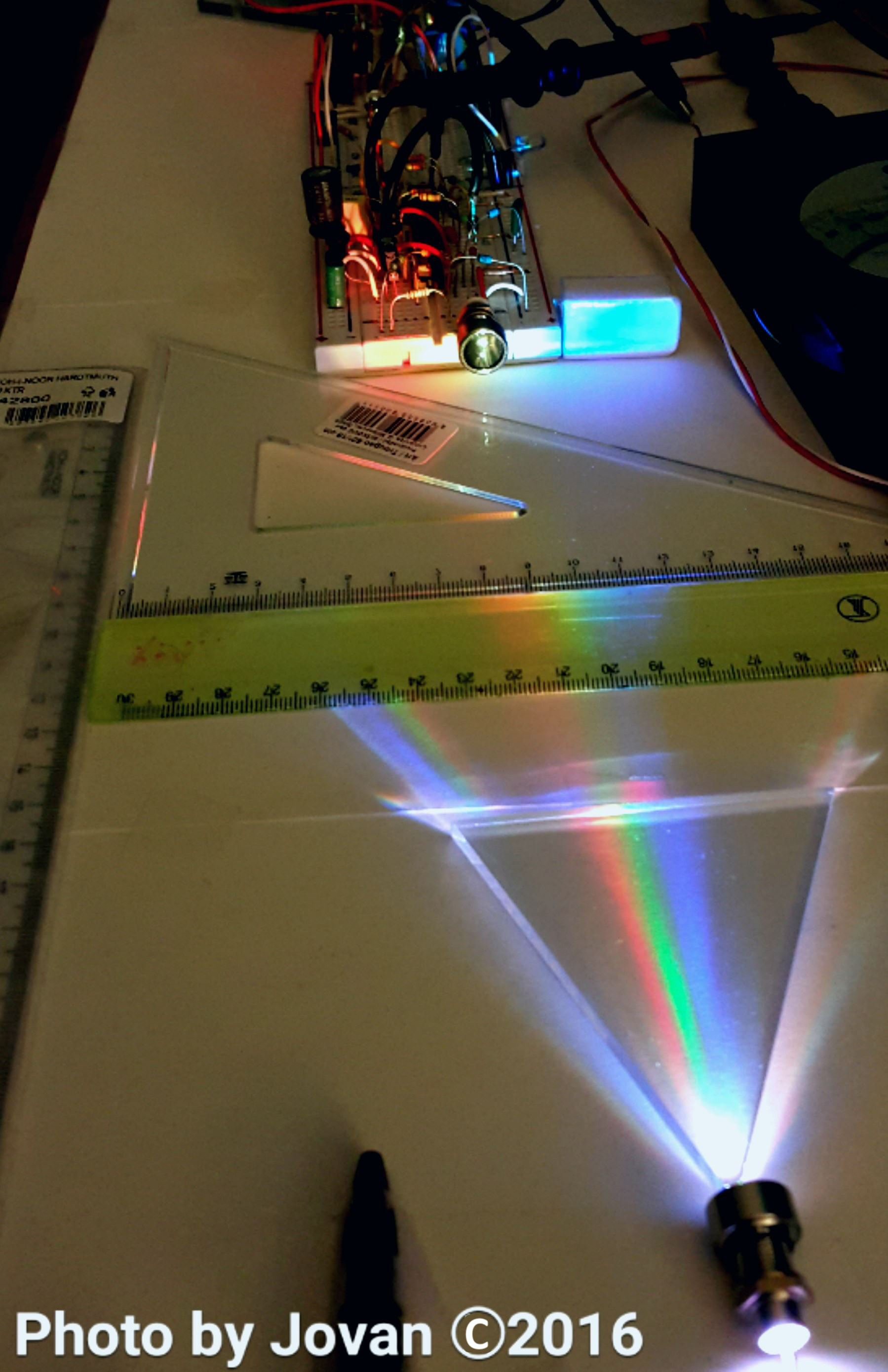
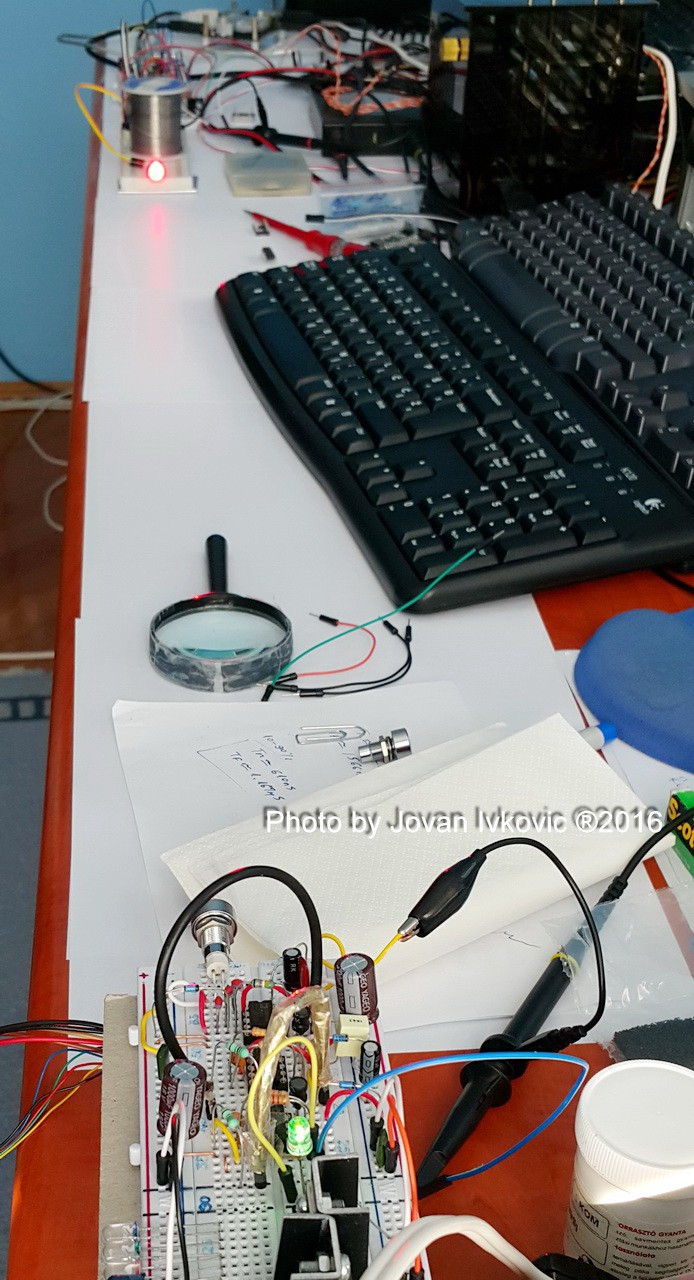
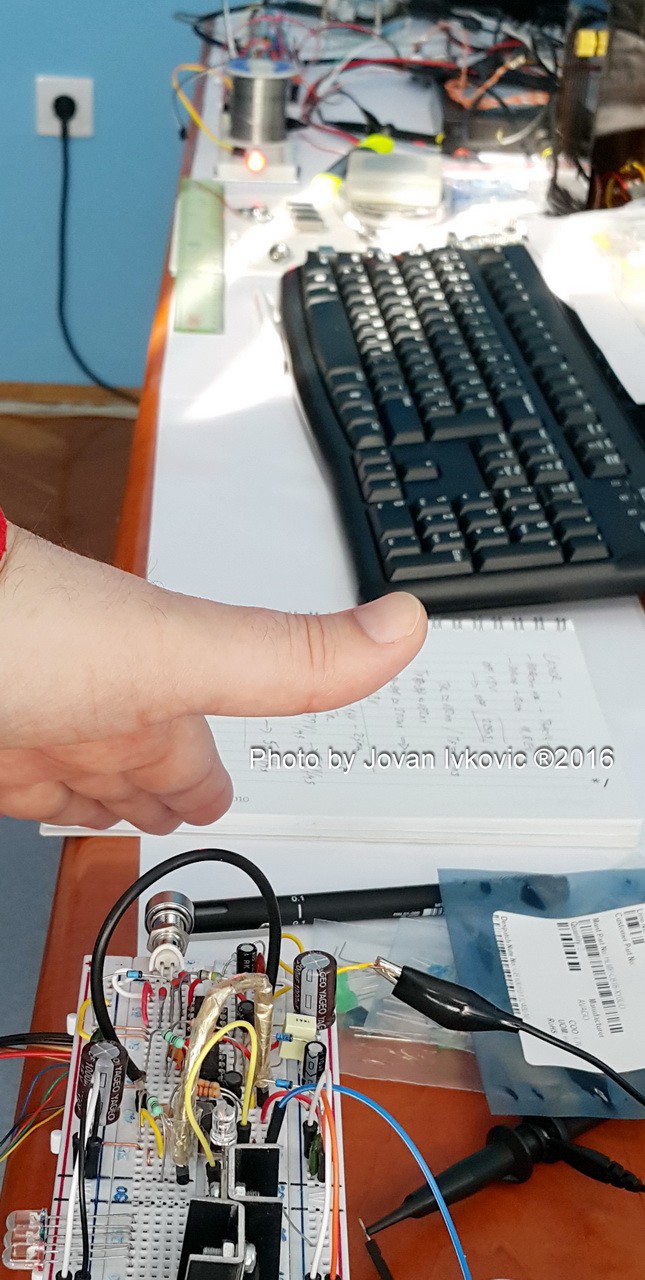
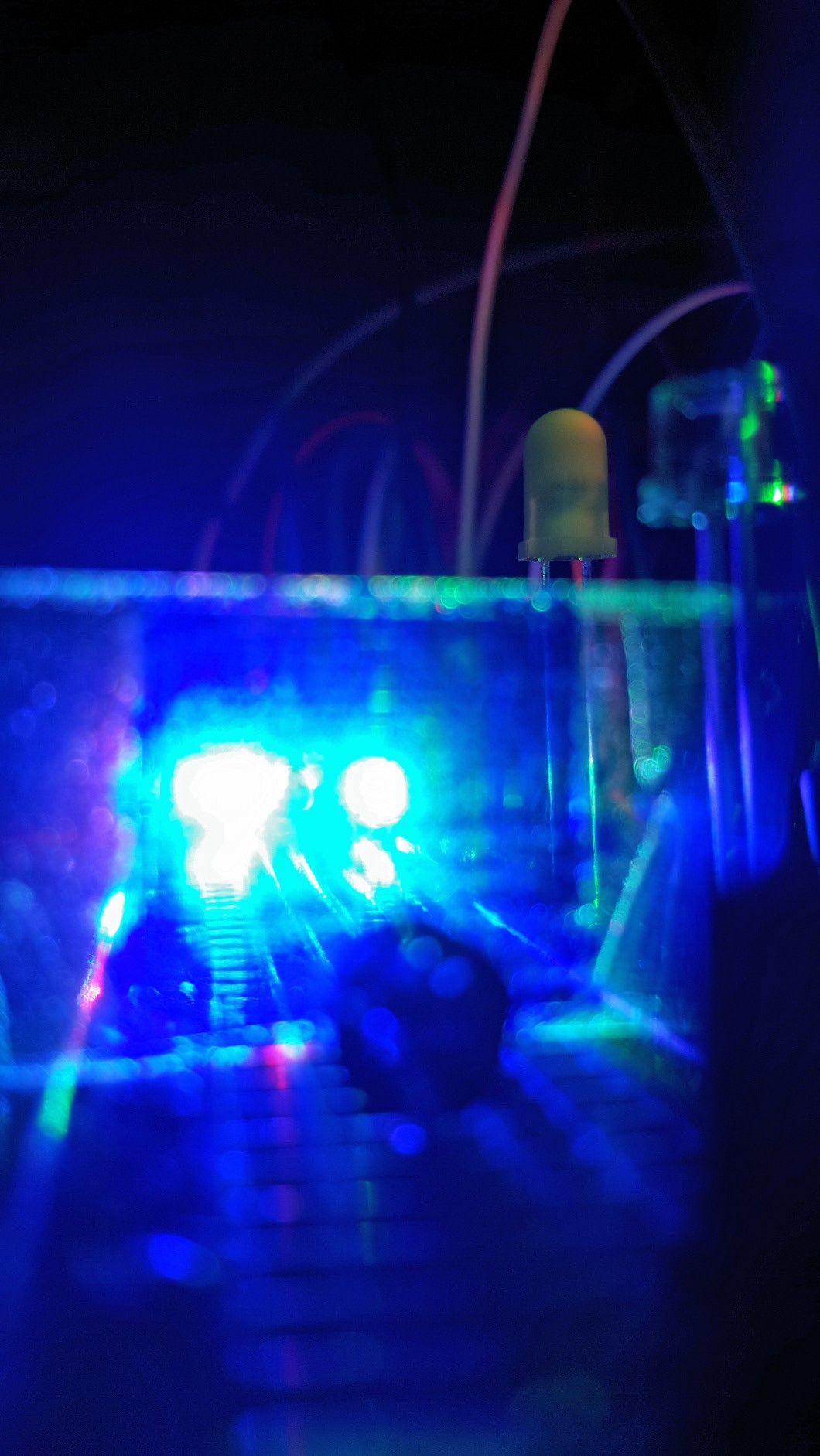
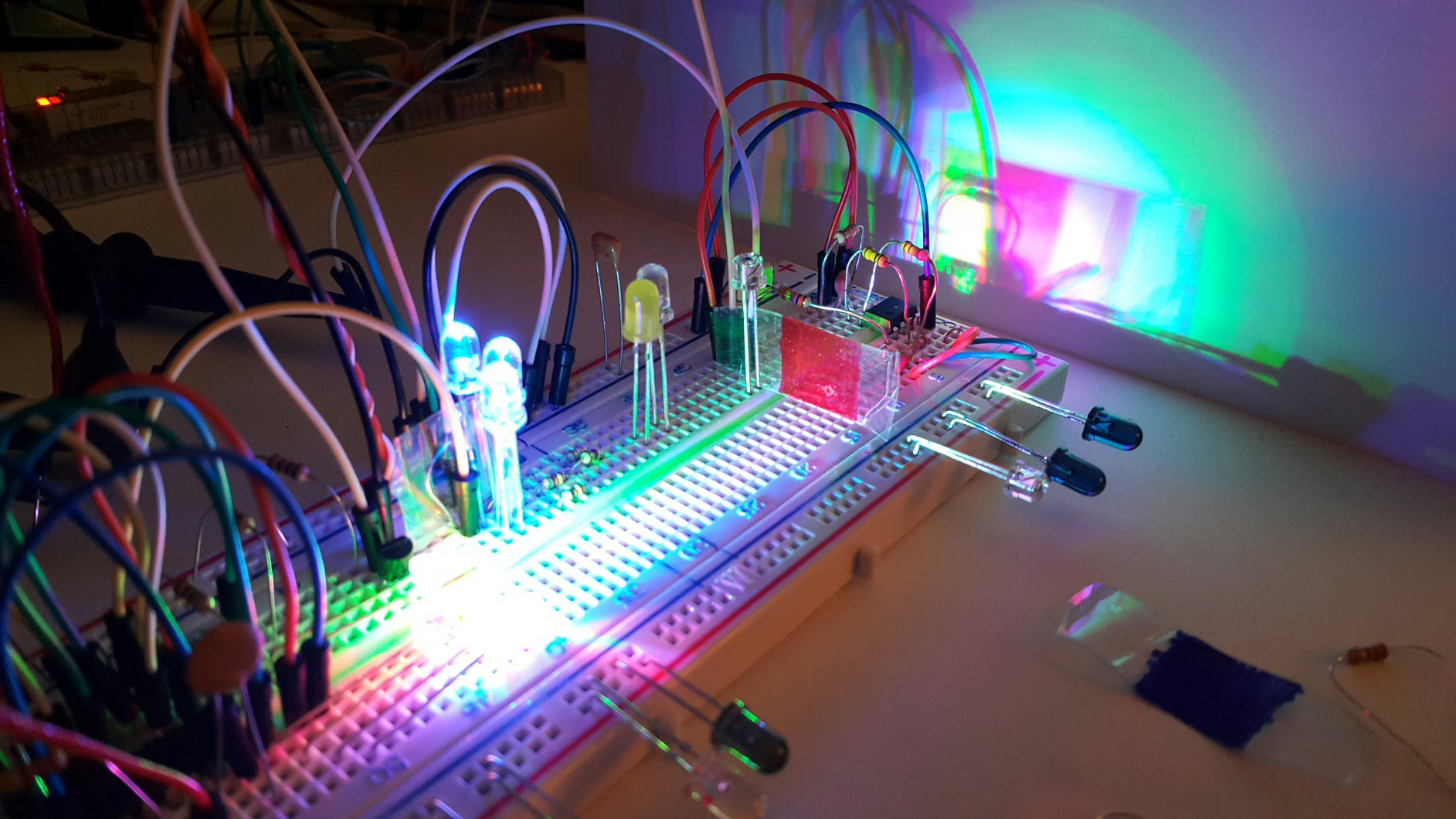
 Setup with color stickers :)
Setup with color stickers :)